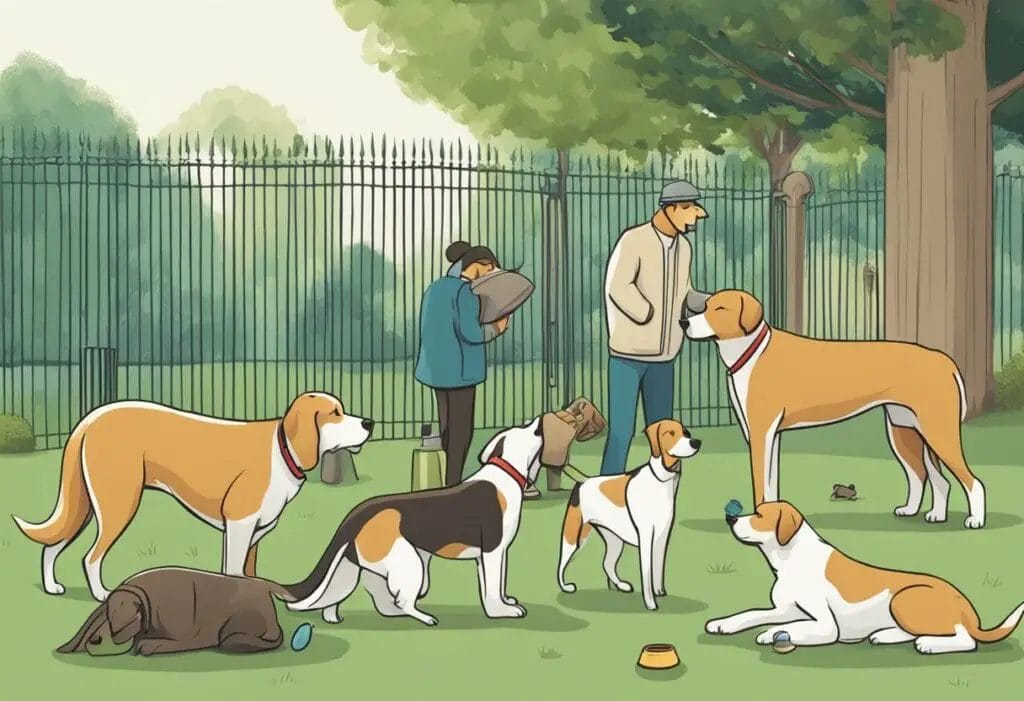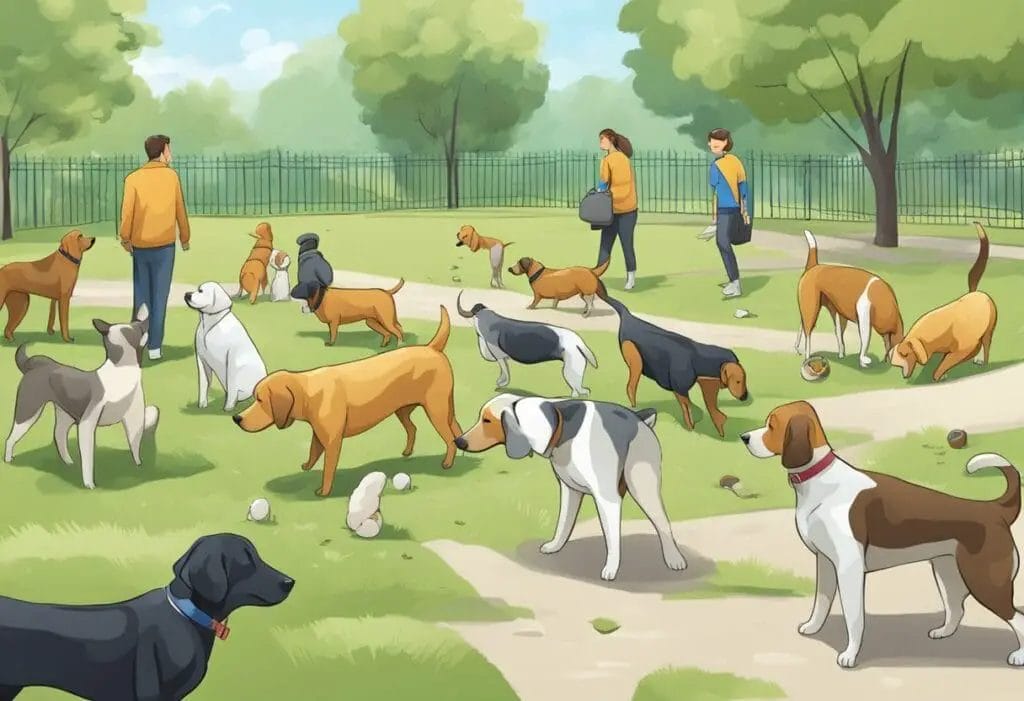Dogs’ noses are incredibly powerful and sophisticated. They use their noses to understand the world around them, and their sense of smell is much more advanced than ours. In fact, dogs have up to 300 million olfactory receptors in their noses, compared to our mere 5 million. This means that dogs have a much more sensitive sense of smell and can detect odors that are far too faint for humans to notice.

Dogs use their noses to gather information about their environment, other animals, and even people. They can sniff out fear, aggression, and other emotional states, and they can also be trained to detect certain scents, such as explosives or drugs. In fact, dogs have been used by the military and police for years to help detect bombs and other dangerous materials.
Research has shown that dogs’ noses are not only powerful but also incredibly complex. Their nostrils are designed to inhale and exhale air separately, which allows them to pick up scents more efficiently.
Additionally, dogs have a specialized organ called the vomeronasal organ, which is located in the roof of their mouths and is used to detect pheromones. Overall, dogs’ noses are truly remarkable and play a crucial role in their survival and daily lives.
How Dogs Smell

Here are some interesting facts about how a dog’s nose works.
The Science Behind Dog’s Nose
A dog’s nose is not a simple organ for detecting odors. It is a complex system that is designed for detecting and processing smells. When dogs inhale, the airstream is divided into two parts, with one part going to the lungs and the other part going to the olfactory system.
Olfactory Capabilities
Dogs’ noses are incredibly powerful. Dogs have up to 300 million olfactory receptors in their noses, compared to just 6 million in humans. This means that we can detect odors at concentrations as low as one part per trillion. That’s like being able to smell one drop of perfume in an Olympic-sized swimming pool.
Nasal Architecture
The structure of a dog’s nose is also designed for detecting and processing smells. They have a large surface area of olfactory mucous membrane, which is covered in olfactory hairs that trap odor molecules. They also have a vomeronasal organ, which is a specialized organ for detecting pheromones.
A dog’s nose is wet and cold because of glands that produce an oily fluid. This fluid helps to capture and dissolve odors so that they can be detected by their olfactory receptors. When they sniff, they can inhale and exhale air rapidly, which helps to improve the flow of odor molecules to their olfactory receptors.
Dogs’ Noses and Communication

Dogs rely heavily on sense of smell to communicate with other dogs and humans. It’s amazing how much information they can gather just by sniffing the air. In this section, I’m going to tell you how dogs use their noses to communicate with each other and with humans.
Chemical Communication
One way dogs communicate with each other is through chemical signals. They use our sense of smell to detect pheromones, which are chemicals that are released by other dogs and animals. Pheromones can convey a wide range of information, such as age, sex, and reproductive status. They can also indicate fear, aggression, and other emotional states.
Humans can’t detect pheromones, but we can still communicate with them through our body language. For example, if a dog smells fear in a human, he might back away or bark to signal that he’s uncomfortable.
Body Language
Dogs also communicate with each other and with humans through body language. They use their tails, ears, and posture to convey our emotions and intentions. For example, if a dog wags his tail, it usually means he is happy and friendly. If they tuck their tails between their legs, it usually means they’re scared or submissive.
Humans can learn a lot about a dog’s mood and intentions by paying attention to their body language. For example, if a dog is growling and baring their teeth, it probably means they’re feeling aggressive or threatened. If they’re cowering and avoiding eye contact, it probably means I’m scared or anxious.
Fun Fact: Did you know that dogs have up to 300 million olfactory receptors in their noses, compared to just 6 million in humans? That's why they're so good at sniffing out bombs, drugs, and other hidden items for the military and police. In fact, some dogs can detect cancer and other diseases just by sniffing a person's breath or urine.
Dogs’ Noses in Action

A dog’s nose is the most important sensory organ, and they it to gather information about their environment, other animals, and even humans. Let me tell you about some of the ways their nose is put to work.
Working Dogs
Many dogs have jobs that require a keen sense of smell. For example, some work as search and rescue dogs, tracking down missing people, or detecting survivors in disaster zones. Others work as police dogs, sniffing out drugs, explosives, or other contraband. Some dogs are trained to detect bed bugs, termites, or other pests.
One of the most famous working dogs is the bloodhound. With their long, droopy ears and wrinkled skin, bloodhounds are known for their incredible sense of smell. They can follow a scent trail that is days old, and have been used to track down criminals, missing persons, and even escaped prisoners.
Medical Detection
Dogs’ noses are so sensitive that they can detect the tiniest changes in our body chemistry. That’s why some dogs are trained to detect medical conditions like diabetes, seizures, or even cancer. For example, some dogs can smell the changes in a person’s breath that indicate a drop in blood sugar levels, and will alert their owners to take action.
In addition, dogs can be trained to detect certain types of cancer by smelling a person’s breath, urine, or skin. Studies have shown that dogs can detect cancer with an accuracy rate of up to 98%, which is even higher than some medical tests.
Overall, dogs’ noses are incredible tools that allow us to understand and interact with the world in ways that humans simply can’t. Whether we’re working as search and rescue dogs or detecting medical conditions, our sense of smell is an essential part of who we are.
